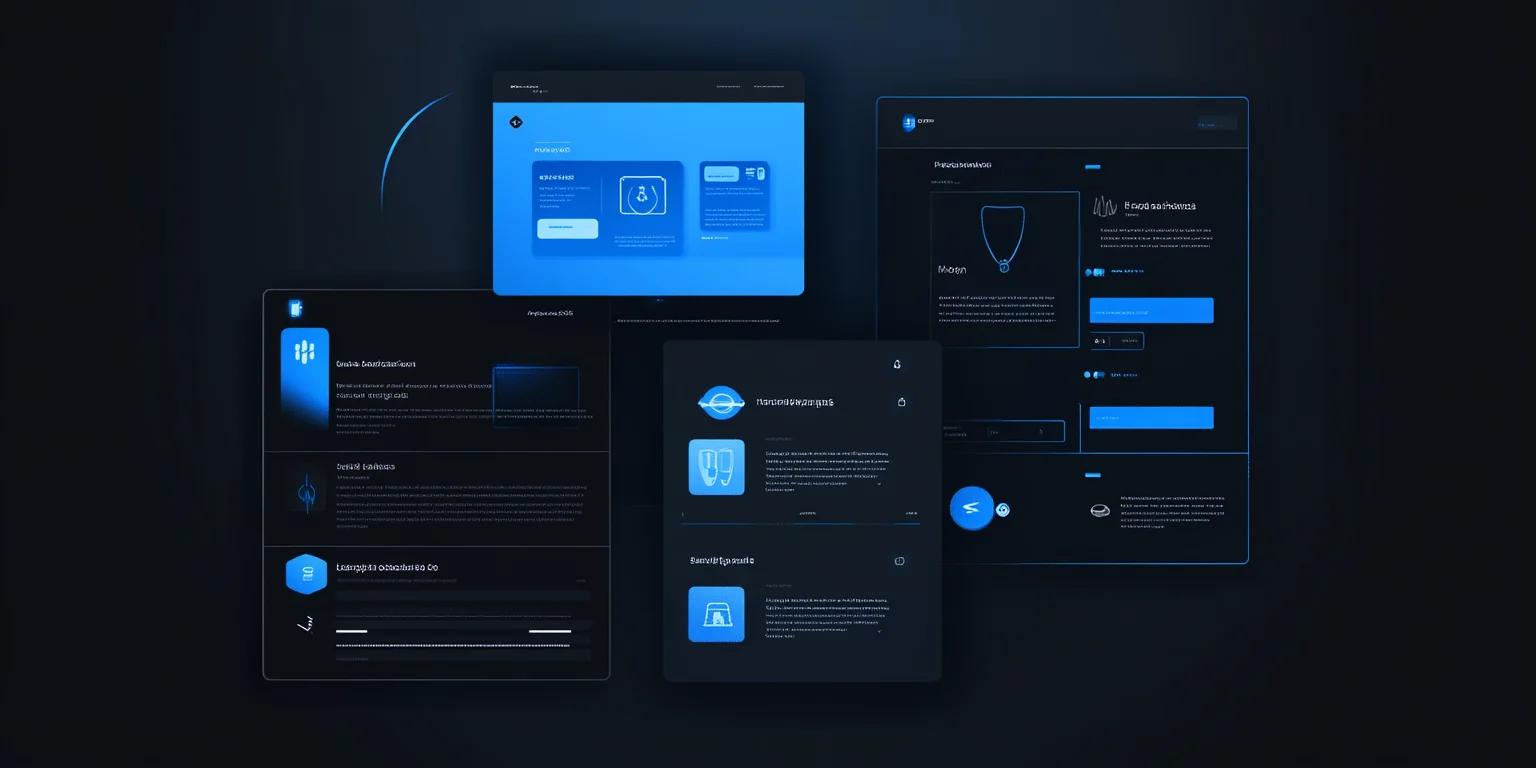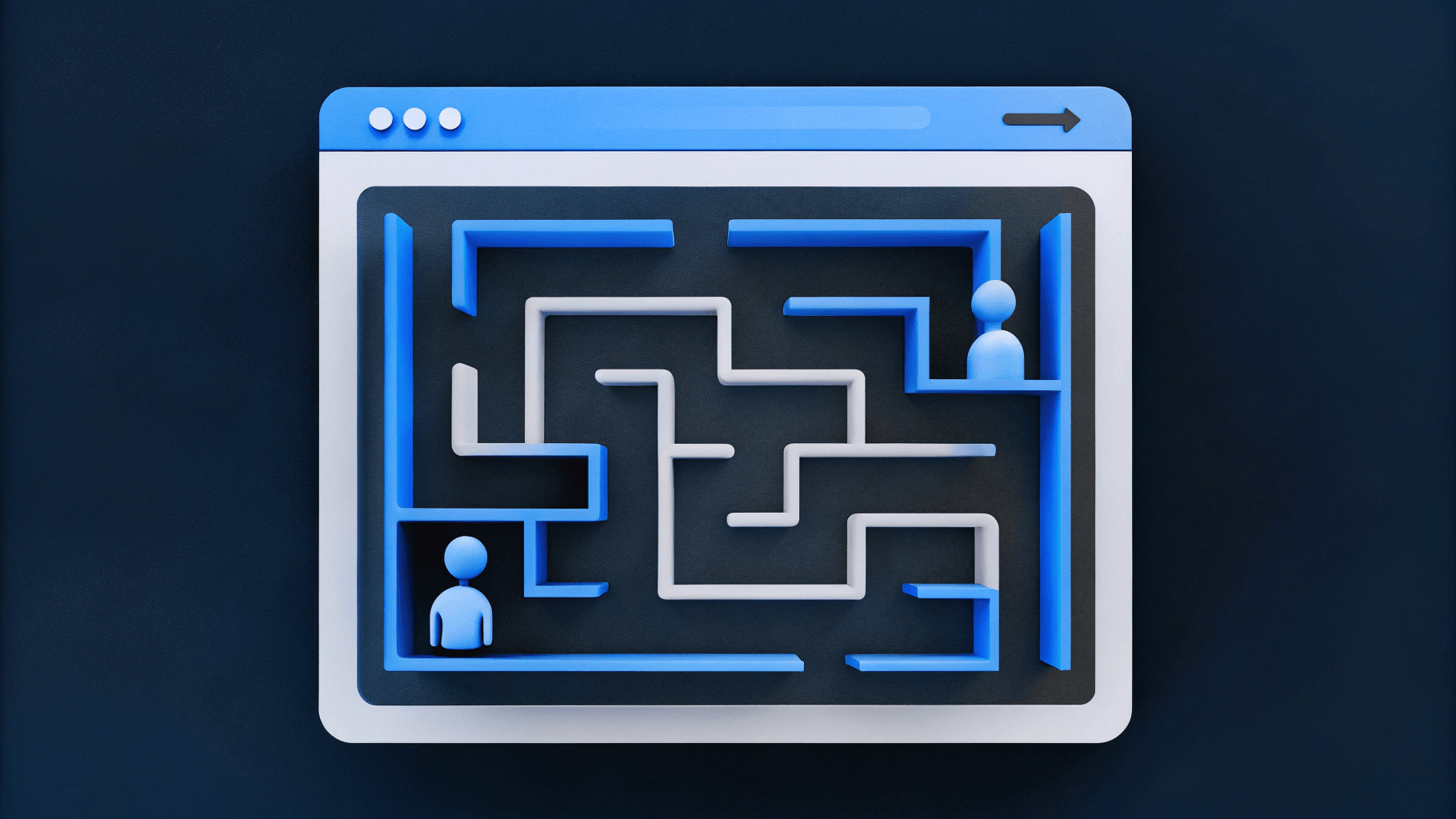Understanding healthcare UX design is essential for improving patient experiences and clinical efficiency in digital healthcare. By focusing on user-centered design, healthcare professionals and digital strategists can meet the needs of patients, clinicians, and other stakeholders.
As healthcare systems adopt digital innovations, the need for specialized UX design services increases, providing opportunities for agencies like Webstacks to contribute significantly to the sector.

What is Healthcare UX Design?
Healthcare UX design involves creating digital experiences centered on users—patients, clinicians, and other stakeholders. Its goal is to streamline processes and improve patient outcomes through intuitive design, addressing the complexities of modern healthcare.
Benefits of Healthcare UX Design
Healthcare UX design offers important benefits that affect both patient outcomes and operational efficiency. Strong UX design addresses the unique challenges of healthcare delivery while supporting the needs of diverse user groups.
Healthcare UX design provides the following benefits:
- Improved Patient Outcomes: Quality UX design encourages patients to adhere to treatment plans and enhances satisfaction. Intuitive and accessible interfaces enable users of all ages and tech-literacy levels to engage effectively. By making medical information more accessible, patients are more likely to follow their prescribed regimens, leading to better health results.
- Enhanced Clinical Workflows: For healthcare providers, UX design streamlines workflows and reduces cognitive load. Intuitive electronic health record systems support clinical decision-making and efficient data entry, allowing providers to focus more on patient care instead of navigating complex systems.
- Increased Patient Engagement: User-friendly interfaces encourage patients to manage their health actively. Systems with clear communication and usability empower patients to take control of their healthcare, promoting self-management and preventive care.
- Reduced Errors: Intuitive design minimizes errors in data entry and interpretation, which is critical in healthcare. By improving clarity and usability, UX design helps reduce mistakes that can affect patient care.
- Cost Efficiency: Well-designed systems optimize resources, leading to cost savings. By enhancing operational efficiency and reducing time on administrative tasks, healthcare providers can allocate resources more effectively.
By leveraging best practices from other industries, such as fintech UX design principles, healthcare UX design can further enhance patient experiences and streamline clinical workflows. Overall, healthcare UX design connects technology and user needs, supporting patient care.
As technological solutions increase in healthcare, the demand for skilled UX designers will grow, highlighting the importance of design in healthcare's future.
4 Key Aspects of Healthcare UX Design
By applying strategic design principles, healthcare UX design focuses on creating user-centered experiences that meet or exceed expectations of patients, providers, and other stakeholders. The following aspects form the foundation of effective healthcare UX.
User-Centered Approaches
User-centered design is fundamental in healthcare UX. Designing with the end-user in mind—patients or professionals—ensures interfaces meet their needs. User research and testing help identify pain points and create intuitive interfaces for different users. This approach reduces friction and supports better health outcomes by making digital tools more accessible and easier to navigate.
Improve Accessibility
Accessibility means designing inclusive interfaces that accommodate users with visual, auditory, or motor impairments. Digital healthcare solutions should be usable by people of all abilities and tech proficiencies. Implementing website accessibility best practices ensures that digital healthcare solutions are inclusive and user-friendly.
For example, Apple's Health app uses features like VoiceOver to assist visually impaired users. Moreover, adhering to web accessibility practices is essential for ensuring compliance and inclusivity in digital healthcare solutions.
Designing for Accessibility in Healthcare Applications
Ensuring accessibility in healthcare applications is vital to provide equitable user experiences for all individuals, including those with disabilities. Adhering to standards like the Web Content Accessibility Guidelines (WCAG) involves implementing features such as scalable text, high-contrast color schemes, and keyboard-friendly navigation.
Incorporating assistive technologies, like screen readers, further enhances usability. Prioritizing accessibility not only broadens your application's reach but also fosters inclusivity, ensuring that all users can effectively engage with your healthcare services.
Enhance Clinical Efficiency
Healthcare UX design aims to streamline workflows and present complex medical information clearly, reducing the cognitive load on professionals. This allows them to spend more time on patient care instead of navigating complex systems.
By focusing on these key aspects and optimizing healthcare websites for performance, healthcare UX designers can create digital solutions that improve patient outcomes and enhance the efficiency and security of healthcare delivery.
Ensure Data Privacy and Security
Data privacy and security are crucial. Designs must comply with regulations like HIPAA to protect sensitive patient information. Integrating privacy and security from the start helps safeguard data without sacrificing usability.
By focusing on these key aspects and optimizing healthcare websites for performance, healthcare UX designers can create digital solutions that improve patient outcomes and enhance the efficiency and security of healthcare delivery.

4 Trends in Healthcare UX Design
Staying updated on UX design trends is crucial to enhancing patient experiences and clinical efficiencies. Keeping an eye on SaaS design trends for healthcare can help providers stay ahead in delivering innovative digital experiences.
1. Telemedicine and Remote Care
Telemedicine and remote care have advanced, especially after the COVID-19 pandemic increased telehealth usage. Today's platforms offer video conferencing, real-time data from wearable devices, and secure messaging for consultations.
These capabilities support continuity of care for patients who face geographic, mobility, or scheduling barriers. Remote care platforms must balance feature richness with simplicity to serve both tech-savvy users and those less familiar with digital tools.
2. AI-Powered Chatbots
Artificial intelligence is increasingly used in healthcare UX, especially through chatbots. These tools enhance patient interactions by providing quick, reliable communication, streamlining processes, and reducing the burden on staff.
Examples of AI-powered healthcare experiences demonstrate how AI can revolutionize patient engagement and operational efficiency. Chatbots can handle routine inquiries, triage symptoms, and guide patients through administrative tasks, freeing healthcare staff to focus on higher-value interactions.
3. Wearables and Self-Monitoring Apps
Wearables have developed from fitness trackers to devices that monitor vital signs. They play a key role in remote patient monitoring by sending real-time data to healthcare providers, supporting proactive health management.
Wearables enable continuous monitoring outside clinical settings, giving providers visibility into patient health between appointments. This data supports earlier interventions and more personalized care strategies.
4. Voice User Interfaces
Voice User Interfaces (VUIs) improve accessibility and usability in healthcare applications. They provide hands-free interaction, beneficial for individuals with disabilities or in environments where manual input is impractical.
A healthcare UX case study illustrates the practical implementation of these trends, showcasing successful user-centered design in real-world applications. Staying informed about the latest SaaS UX design strategies can help healthcare organizations adopt best practices and remain competitive.
These trends show how technology and healthcare intersect, emphasizing the importance of UX design in creating a more accessible and efficient healthcare system.
Future of Healthcare UX Design
Three key areas will shape the future of healthcare UX design: patient-centered design, integrating new technology, and enhancing accessibility and inclusivity. These priorities reflect the evolving needs of both patients and healthcare systems as digital tools become more central to care delivery.
Key focus areas include:
- Patient-centered design emphasizes creating intuitive interfaces for patients of all ages and tech literacy levels. By focusing on user needs, healthcare applications can empower patients to manage their health, leading to better outcomes.
- New technologies will shape the future of healthcare UX. Integrating AI, as discussed in AI integration in healthcare, streamlines data management and diagnostics and enhances communication between patients and providers.
- As the global population ages and user needs diversify, enhancing accessibility and inclusivity in healthcare UX design is crucial. Designing for accessibility ensures that digital health tools are usable by everyone, including seniors and people with disabilities.
Strategies like website localization for medtech can expand the reach of healthcare solutions to diverse populations. By prioritizing these areas, healthcare organizations can build digital experiences that serve broader audiences and support better health outcomes across different demographics and geographies
Best Practices for Healthcare UX Designers
Adopting best practices, including a robust medtech content strategy, is crucial for creating digital solutions that are user-friendly and effective. The following practices support both usability and compliance in healthcare UX design.
Conduct Thorough User Research
Understanding the needs and challenges of diverse user groups is fundamental to effective healthcare UX design. User research allows designers to gather insights directly from patients, caregivers, and healthcare providers.
This research uncovers pain points, workflows, and user expectations that inform design decisions. Without direct input from end users, healthcare applications risk missing critical usability requirements or introducing friction that affects care quality.
Prioritize Accessibility
Accessibility is essential in healthcare UX design. By prioritizing it, designers cater to a wide range of users, including those with disabilities and varying tech proficiency.
Accessible design ensures that all patients can access care and information, regardless of physical or cognitive limitations. This approach expands reach while meeting legal and ethical obligations to provide equitable healthcare experiences.
Test and Iterate Continuously
Testing and iterating designs is vital in healthcare UX. Continuous testing helps identify usability issues early, allowing designers to make informed adjustments before launch.
Utilizing design collaboration tools can facilitate effective communication and streamline the design process. Along with applying effective website strategies for healthcare, healthcare UX designers can create designs that meet user expectations, contributing to better patient outcomes and operational efficiency.
Our Take on UX in Healthcare
Designing for the healthcare sector demands a nuanced understanding of both user experience and patient care dynamics. Effective healthcare UX design should prioritize empathy, clarity, and accessibility to meet the diverse needs of patients and providers.
By focusing on intuitive interfaces and seamless interactions, we can enhance patient engagement and improve health outcomes. It's essential to balance technological innovation with user-centric design principles to create solutions that are both advanced and universally accessible.

Make Healthcare UX Design Work for Your Organization
Incorporating the latest trends and best practices in healthcare UX design is essential for creating effective digital solutions. By focusing on user-centered design, accessibility, and technological innovation, healthcare providers can enhance patient care and clinical efficiency.
Webstacks, with its expertise in composable web design, is ready to partner with healthcare organizations to develop user-friendly digital solutions. Ready to optimize your healthcare website for growth? See the Webstacks difference: Schedule a brief discovery call today. Let us help you create a website that drives results.




